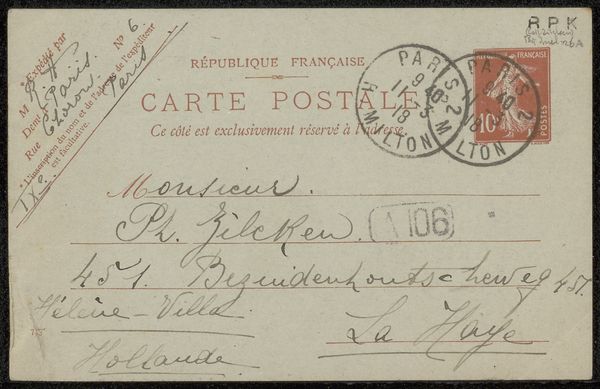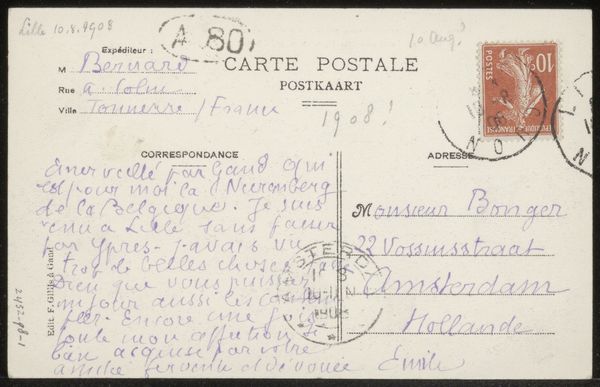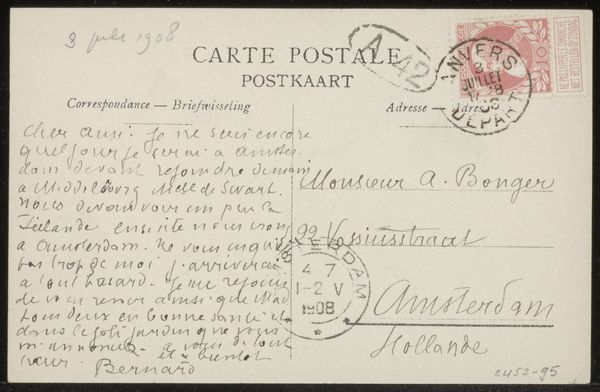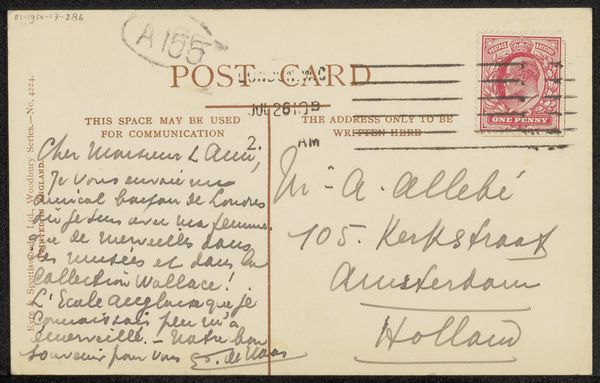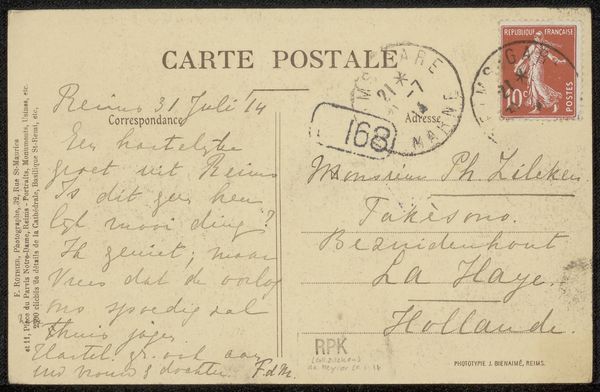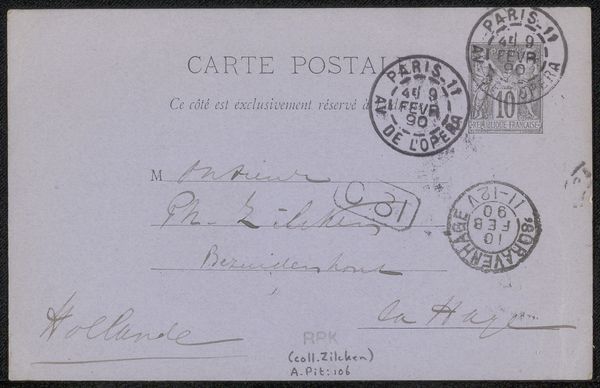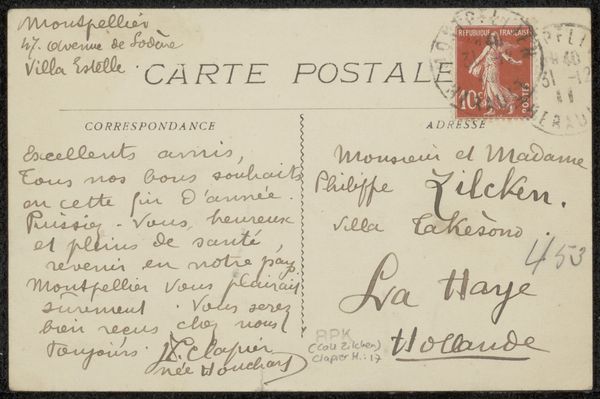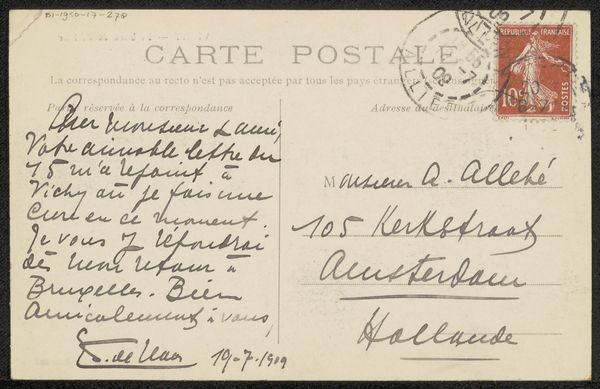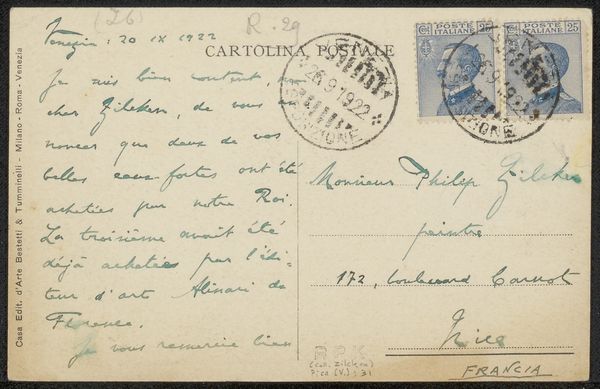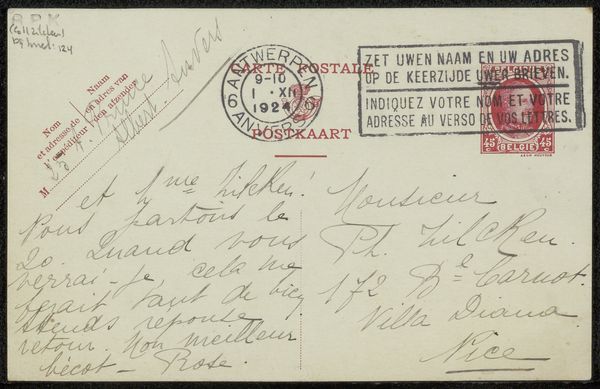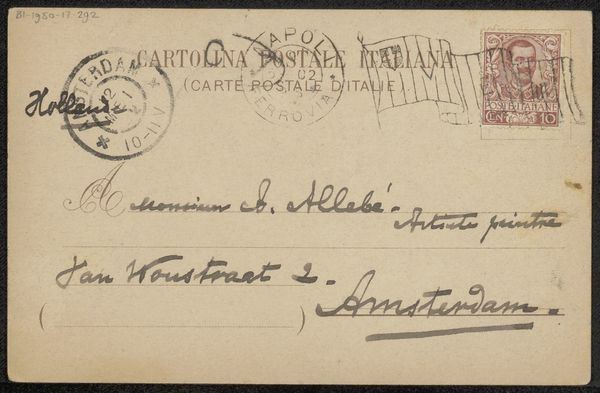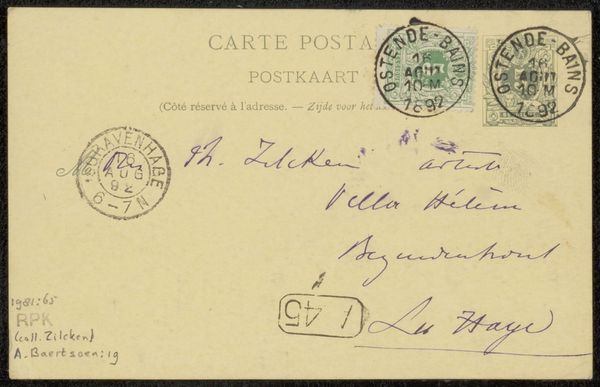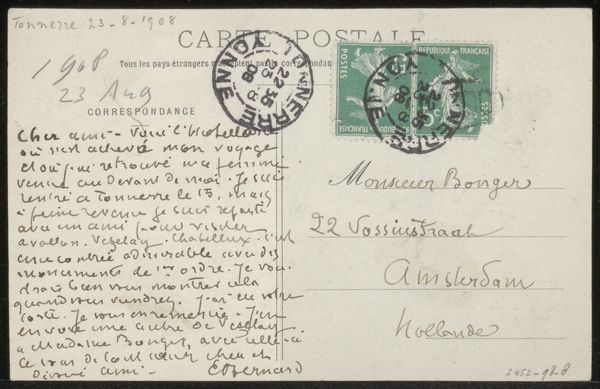
#
script typography
#
hand-lettering
#
playful lettering
#
hand drawn type
#
hand lettering
#
personal sketchbook
#
hand-drawn typeface
#
sketchbook drawing
#
handwritten font
#
small lettering
Copyright: Rijks Museum: Open Domain
Editor: This is a postcard, "Prentbriefkaart aan Andries Bonger," by Émile Bernard, created after 1919. It seems to be handwritten. The mood is intimate, like a personal note. What's particularly interesting to you about this piece? Curator: For me, it’s about understanding this postcard not just as a message, but as an object shaped by its specific materials and means of production. The cheap paper stock, the mass-produced stamps – these elements speak to the democratization of communication in the early 20th century. It’s not high art, yet it's deeply revealing. Consider also the hand-written element: the specific strokes of Bernard's pen turning printed matter back to something personal, a sort of bespoke creation. How does this tension between mass production and personal touch affect your understanding? Editor: That's a great point, I hadn’t thought of it like that. The handwriting *does* personalize something mass-produced. Is that something he likely considered or tried to emphasize through his choice of text and penmanship? Curator: Possibly. We can analyze the labor involved: Bernard, as an artist, engages in the physical act of writing, selecting his words, controlling the pressure of the pen. This deliberate crafting, set against the backdrop of mass-printed postal infrastructure, elevates the mundane into something worthy of our attention. Editor: So it's almost like a commentary on the industrial age, disguised as a simple greeting? Curator: Precisely! It prompts us to examine the intersection of art, communication, and the social conditions of production and consumption. Editor: That's a fascinating way to look at it; seeing the postcard as a product of its time and the labor that went into its making, really enriches the experience. Thanks! Curator: Indeed. It makes us aware that art is never created in a vacuum; its always rooted in materiality and social exchange.
Comments
No comments
Be the first to comment and join the conversation on the ultimate creative platform.
